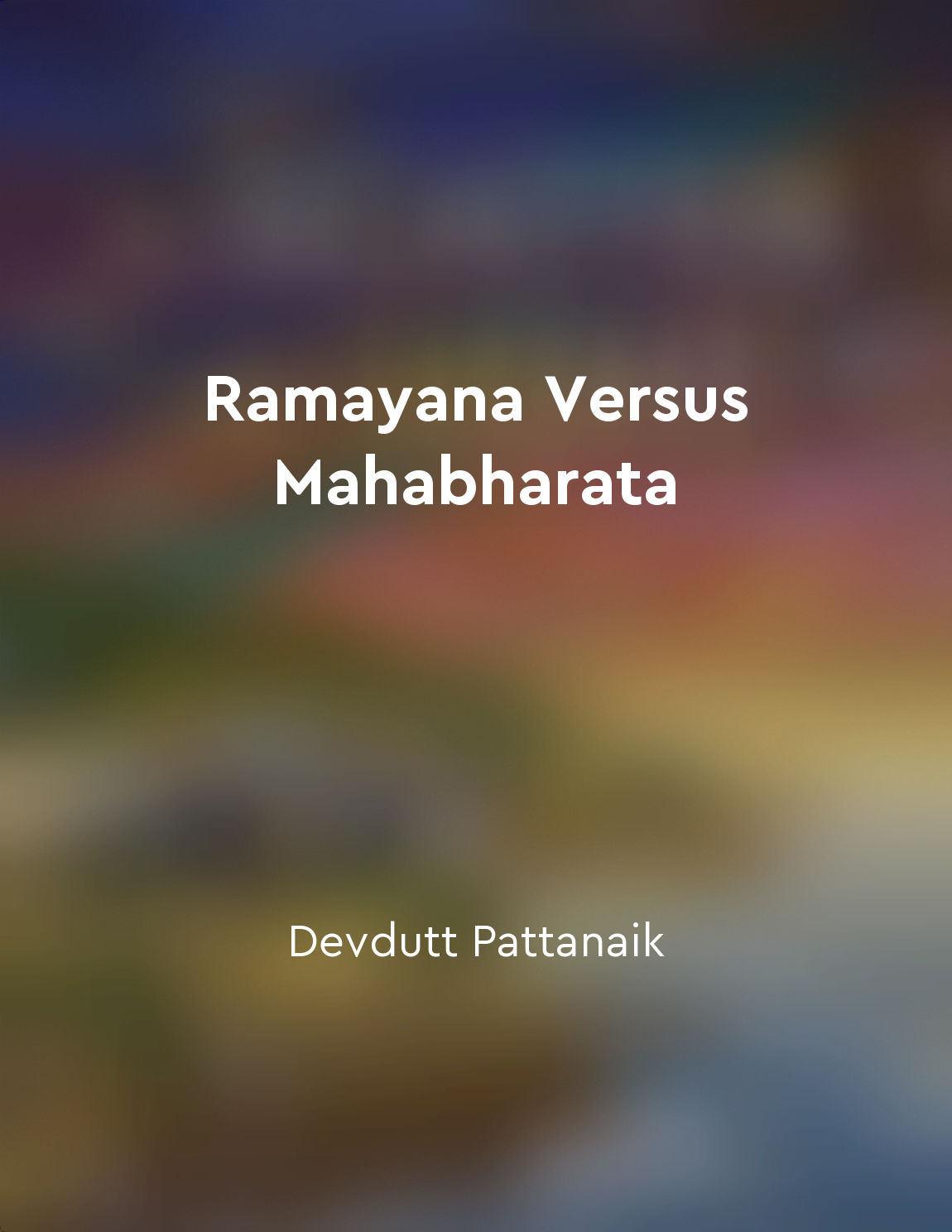Ancient India from "summary" of Ramayan by P. R. Mitchell
The events that took place in the Ramayan are set in a time long ago, in a land that was known by a different name. It was a time of great kings and noble warriors, of love and betrayal, of gods and demons. The people of this land lived according to the ancient customs and traditions that had been passed down through generations. The society was structured in a hierarchical manner, with kings ruling over their kingdoms and priests performing religious ceremonies. The people believed in the power of karma, the idea that one's actions in this life would affect their fate in the next. They worshipped many gods and goddesses, each representing different aspects of life and nature. The land was divided into different regions, each ruled by a powerful king. These kings were often engaged in wars with each other, seeking to expand their territories and increase their wealth and power. The people who lived in these regions were fiercely loyal to their kings, willing to fight and die for them if necessary. The Ramayan tells the story of one such king, Rama, and his quest to rescue his wife Sita from the demon king Ravana. It is a tale of love and devotion, of bravery and sacrifice. Through his trials and tribulations, Rama demonstrates the virtues of a true king: courage, compassion, and righteousness. The characters in the Ramayan are larger than life, embodying the ideals and values of the society in which they lived. Rama is the perfect king, always putting the needs of his people above his own desires. Sita is the ideal wife, loyal and devoted to her husband even in the face of great hardship. Ravana is the epitome of evil, driven by greed and ambition to commit unspeakable acts. The Ramayan is more than just a story; it is a reflection of the beliefs and values of ancient India. It serves as a guide for how one should live their life, with integrity and honor, always striving to do what is right. The lessons of the Ramayan are timeless, applicable to people of all backgrounds and beliefs. It is a testament to the enduring power of storytelling to convey moral truths and inspire readers to lead virtuous lives.Similar Posts
Rama's coronation as king
In the pleasant city of Ayodhya, the people were overjoyed at the news of Rama's return from exile. The streets were decorated ...

Rama as an ideal king
Rama, the protagonist of the epic tale, is depicted as the epitome of an ideal king. His character is a blend of virtues such a...
Seeta's abduction by Ravana
The great demon-king Ravana, with his ten heads and twenty arms, harbored a burning desire for the beautiful princess Seeta. On...
The story of Karna and his tragic fate
In the great epic Mahabharata, the character of Karna stands out as one of the most tragic and complex figures. His story is a ...

Ramayana's Agastya is wise, Mahabharata's Bhishma is selfless
In the Ramayana, Agastya is portrayed as a wise sage who is respected by all for his knowledge and guidance. He is seen as a me...
Sita's purity and chastity
Sita, the wife of Rama, is renowned for her unwavering devotion, purity, and chastity in Valmiki's Ramayana. Her character is p...
Sita's purity and chastity
Sita, the wife of Rama, is renowned for her unwavering devotion, purity, and chastity in Valmiki's Ramayana. Her character is p...

The role of women
Women play a significant role in shaping the narrative of The Mahabharata. They are portrayed as strong, resilient, and multi-d...

Sacrifices made for greater good
In the grand tapestry of life, sacrifices are often required to achieve a greater good. This fundamental truth is echoed throug...
Bharata's devotion to Rama
Bharata's devotion to Rama shines brightly in Valmiki's Ramayana. From the moment he learns about his mother Kaikeyi's wicked s...
